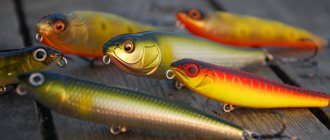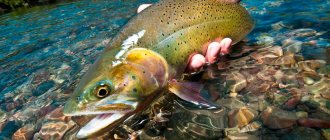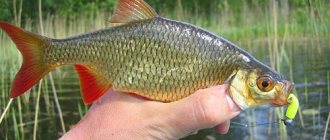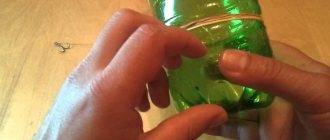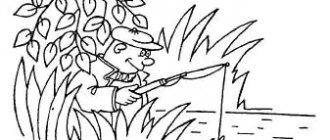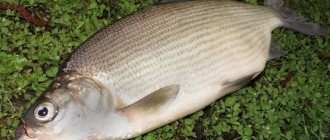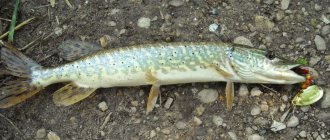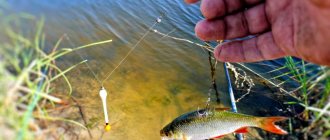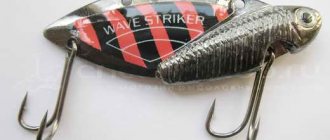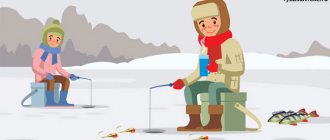Fishing for predators is becoming an increasingly popular way of spending leisure time every year. One of the most interesting, exciting and at the same time simple options for such a holiday is spinning fishing from the shore. This kind of fishing allows you to catch a large number of different types of fish without using a boat or other large equipment. In addition, spinning equipment often allows you not to be left empty-handed when other types of equipment are ineffective.
Tackle
Coastal spinning is somewhat different from boat spinning, primarily in its length. In most cases, a rod with a length of about 270 centimeters is considered a classic for this type of fishing, but depending on the conditions and habits of the fisherman, its length can range from 200 to 300 centimeters. Short blanks are more often used for fishing in small bodies of water - small rivers, spills and ponds. For fishing on large lakes and wide deep rivers, models no shorter than 2.6 meters are usually used.
There are not many models of three-meter long spinning rods, since they are not in great demand, but Daiwa and many other serious fishing brands still manufacture and offer them to consumers.
The gear test also largely depends on the fishing conditions and the reservoir. Spinning rods with a test weight of around 5–25 grams are considered classics, however, when catching small perches in spills, a microjig stick of up to 5 grams will be quite sufficient, and for fishing for trophy pike in strong currents, you will have to use massive baits and a rod with a test weight of 10 to 40 grams .
On a note! The structure of the rod practically does not depend on the place where spinning fishing is carried out, and is determined on the basis of the baits that the fisherman mainly uses, as well as his personal preferences. For example, rods with a fast action are more suitable for jig rigs, and for spinners and spinners - with a slow or medium action.
A reel for shore fishing must be selected with an appropriate supply of cord. Typically, the spool size for it is about 2500–3000, with the exception of ultralight options. There are no other special requirements for this part of the spinning kit for this type of fishing.
About spinning rods
The spinning rod consists of a handle (butt), a reel holder, a blank, which is equipped with guide rings for guiding the cord or fishing line, the last ring at the tip is called a “tulip”.
Spinning rods are distinguished by the type of connection of the knees:
- Plug-in. The most popular among spinners. They have two, less often three, elbows that are inserted into each other. Lungs.
- Telescopic. Retractable, heavier, less durable and sensitive. Convenient to transport.
There are rods of one-piece designs on sale, usually short (up to two meters). They are called one-part ones. Consist of one knee. The most “sensitive”, but often inconvenient to transport.
The material used to make the form determines its weight and strength:
- Fiberglass.
- Carbon fiber (graphite, carbon).
- Composite (a mixture of fiberglass and carbon fiber in various proportions).
- With Kevlar admixtures (super strong material).
Pay attention to the material used to make the handle: smooth artificial polymers will slide in your hand, choose natural ones, for example: cork.
Rings are one of the most important elements; the reliability and sensitivity of spinning tackle depends on their quality. But it should be noted that expensive samples are not always necessary.
Accordingly, for a spinning rod on which it is possible to use braided wire, we check the quality and material of the inserts and the rings themselves; for a regular rod, more budget solutions are also suitable.
The test form indicates the weight of acceptable baits, divided into:
- Ultra-light (UL – Ultra-Light) – up to 6 gamma.
- Light (L – Light) – from 6 to 11 grams.
- Medium-light (ML – Moderate Light) – from 11 to 19 grams.
- Medium (M – Moderate) – from 19 to 23 grams.
- Moderate Heavy (MH – Moderate Heavy) – from 22 to 37 grams.
- Heavy (H – Heavy) – from 35 to 45 grams.
- Super heavy (XH – Extra Heavy) – over 45 grams.
The structure of the form is an important characteristic that determines its flexibility.
The play of the bait when retrieving and the casting distance depend on this:
- Extra Fast – when loaded, 1/5 of the form will bend.
- Fast – 1/4 part.
- Medium (Moderate) – 1/3 part.
- Slow – 1/2 part.
The length of the rod allows you to vary the casting distance:
- Long rods over three meters are used for sea fishing, on large rivers, and when fishing from the shore of large bodies of water.
- Medium length (2.10-3.00 m) - used on lakes, small rivers and rivers, canals, etc.
- Short (1.50-2.10 m) – when fishing from a boat.
Nowadays there are a huge number of different spinning rods on sale, and understanding them is not at all easy. In order for everything to fall into place, we will analyze each aspect. Well, if you don’t have time to delve into the intricacies, go down to the conclusion section, the best tackle has already been selected there.
Lures
Fishing for pike in summer using a spinning rod from the shore
For fishing from the shore there are no restrictions on the equipment used. As a rule, the best option is selected based on fishing conditions: time, depth, current strength, bottom topography and type of fish. The following baits can be used quite successfully:
- Spoons. You can use both rotating and oscillating varieties. However, if spinners can be used in almost any conditions, for fishing with spinners it is advisable to choose areas with a clean bottom to avoid snags. You can effectively fish with spoons at almost any depth, but it is preferable to do this in reservoirs with no or weak current.
- Wobblers. Fishing with this type of artificial bait is often and very effectively practiced from the shore. Moreover, you can successfully catch both with uniform and twitching wiring. These baits can be used both on rivers and lakes, however, just like spoons, they are sensitive to hooks.
- Silicone baits. The most popular spinning equipment among domestic fishermen is, of course, the jig. It performs well when fishing at great depths, but can also be used quite successfully in shallow water. Jig heads equipped with silicone baits work effectively regardless of the strength of the current - it only affects the weight of the load. At the same time, offset hooks can be successfully used for fishing in difficult conditions with a large number of hooks.
- Spinnerbaits. A specific type of bait that can be used quite effectively from the shore, especially when fishing in coastal vegetation. They are very resistant to snags, and can also be quite heavy, which allows them to be cast far, despite poor aerodynamics and high windage.
- Spaced equipment. Another mounting option for spinning fishing, which helps out when other baits are powerless. These include Texas and Carolina rigs, drop-shot, lead and others. Due to the free connection of the load and the bait, the game of the latter acquires greater freedom and amplitude, which perfectly attracts fish.
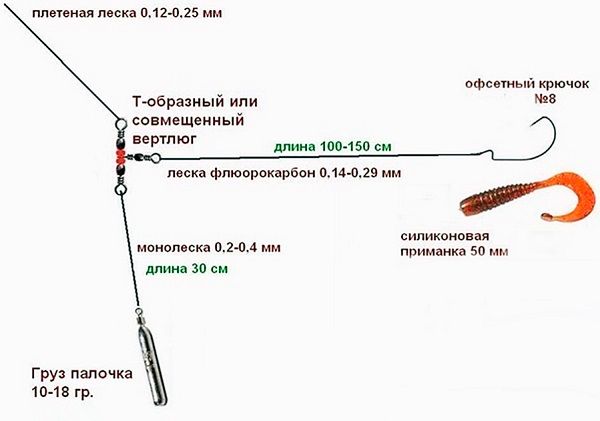
The design of the retractable leash is ideal for catching perch from the shore. Stepped wiring makes the bait move in a parabola, and then slowly sink to the bottom, which can provoke even a passive predator.
In fact, there are no real restrictions that prevent you from fishing from the shore using even less common equipment, such as flies, jigs, etc.
Spinning fishing tactics
Catching white fish with a spinning rod is carried out mainly with bottom gear: a feeder and a donka. These two species have their own equipment depending on the desired catch.
But both fly fishing and casting can also be classified as types of fishing for “white” fish using spinning rods. You can also catch peaceful fish while trolling, fishing with edible rubber, wobblers and other options for hunting predators, but this is mostly an accidental bycatch rather than the rule.
The spinning rod is equipped with a reel on which a cord or fishing line is wound, passed through guide rings and the equipment is tied. Gear is selected according to the characteristics of the spinning rod.
If there is a pike in the reservoir, then a leash is used, which is tied to a cord, and the bait is attached to the carabiner of the leash.
Reels can be inertial, inertial-free, multiplier.
Multiplier rods are the most powerful, so they are equipped with spinning rods for trolling and for catching catfish and other large fish.
Inertial ones are used in fly fishing and in the bottom version of spinning fishing.
The choice of cord or monofilament depends on the fishing method and location.
For example, for jig fishing, the extreme sensitivity of the gear is important. The fisherman controls the movement of the bait and the bite tactilely - through the form and visually - along the tip of the rod. The cord has no stretch, which ensures the best signal transmission from the bait to the form and then into the angler’s hand.
The monofilament, in turn, has stretchability and thereby dampens sudden jerks of the fish. This property, coupled with the flexibility of the rod and a properly configured clutch, helps to bring out the trophy without annoying derailments.
Expert opinion
Vladimir Poltoranin
Fisherman - expert
What type of base to equip a fishing rod needs to be determined for each individual case. There can be many factors - this is a littered reservoir (braid collects garbage like a vacuum cleaner), the presence of a shell (monofilament is less susceptible to cuts on sharp edges), weak fish lips (the line is stretchable and handles jerks better), pike teeth cut braid perfectly and do not always cope with fluorocarbon (fluorocarbon fishing line).
Small in appearance, but not in importance, are the auxiliary equipment elements:
- swivels;
- carbines;
- winding rings;
- fasteners
The comfort and reliability of the gear depends on their quality and proper selection and installation. A poor-quality swivel will ultimately result in twisting of the fishing line, which will lead to its tangling, the so-called “beard”. And instead of enjoying fishing, you will waste time and nerves redoing the gear.
This also applies to other installation elements. High-quality fittings contribute to the overall balance of the gear; you should not skimp on these small things.
We invite you to familiarize yourself with: Fishing with a diverter leash - 90 photos and videos of gear, bait and fishing with a diverter leash
The tactics of spinning fishing are practically the same in any body of water: be it a large or small river, lake, reservoir, etc.; Whether you are fishing from the shore or from a boat, with an active spinning rod or feeder, with a donkey or a casting rod, you will be subject to the following components:
- Finding a fishing spot (choosing a fishing spot);
- Duration of reconnaissance (fishing) of an unfamiliar (or familiar) place;
- Variety in the choice of baits and complementary foods (selection);
- Varying the degree of immersion of baits (for active spinning);
- Animation of baits by combining the type of postings (for active spinning).
Finding a fishing spot
It involves choosing a place in the territory of which the fish you have chosen can stand (feed) or hunt.
If this is a predator, then we will choose dumps, edges, bottom holes, boundaries of vegetation and clean water, steep shore, etc., i.e. those places where it is convenient for a predator to make an ambush.
If we catch peaceful fish, then we choose places for active feeding (or we feed in places that are familiar to fish and convenient for fishing) depending on the time of day: if night fishing is in shallow water, daytime fishing is in deeper fishing areas.
The time you will spend searching for actively feeding fish or stimulating their activity.
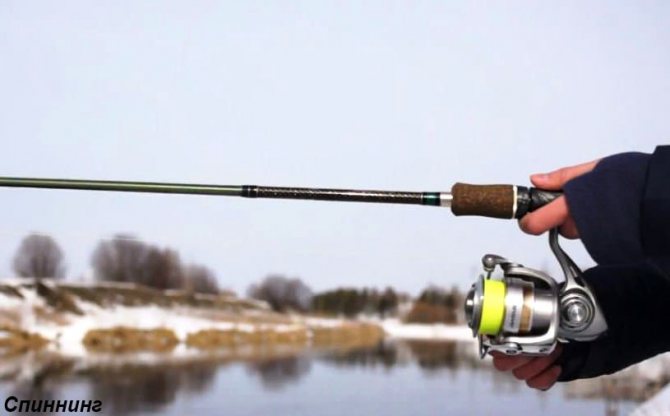
This parameter depends on the time of year. In winter, late autumn, early spring - there is a greater dependence on weather conditions and seasonality of behavior: if you find a fish site and cannot catch it, then the fishing time will be quite long, because... All tactics will need to be tested.
In late spring, summer, early autumn, when the fish are active, the time for fishing is reduced significantly. To search for active fish, three or four casts to each promising place are enough.
Selection of baits
It all depends on the preferences of the fish at a particular moment.
For example, the choice of the size of a wobbler or silicone will depend on the length of the fry near the shore. This is the main food supply of the predator in the fishing area.
You will vary the bait on the hooks of the feeder or donkey, just like the complementary food in the feeders. Everything will depend on the gastronomic preferences of the selected fish.
More relevant to active spinning fishing, since it is necessary to find fish sites in layers of water. We consistently study by varying the depth of the postings, experimenting with equipment (jig heads, wobblers, spinners, spoons). This is more about a predator than a peaceful fish. Her preferences will depend on weather conditions, time of year and day.
Lure animation
It is more important during the period of least fish activity, as is the choice of color, shape and size of baits. To stir up a sluggish predator, it needs to be qualitatively stimulated to attack the bait by changing or combining the methods of wiring to create a more attractive animation for the predator. It would be very appropriate to experiment here. This requires time and skill.
In spinning fishing, when an individual follows the bait, there is no need to reduce speed. On the contrary, the bait should move more; these manipulations should be done quickly, without changing the speed of rotation of the reel.
The spinner must know that most predators grab the bait from their hiding places and want to return there. Therefore, at the beginning of fishing with a spinning rod from the shore, determine the possible directions for guiding the bait. For an experienced spinning player, one glance at a body of water is enough to choose his techniques based on some signs.
If a bite occurs near thickets or snags, then you must hurry to bring the prey to clean water. This happens if the hook is successful.
When a hooked fish goes against the current, it is almost impossible to reverse its movement. Now the fisherman relies on the strength of the rod and line. If he is confident in his tackle, he needs to speed up the fishing.
When a fish caught on a hook goes with the flow, the line should be released. Usually the trophy then turns against the current. A quick jerk of the rod tip, lowered to the water itself, will help move it. The resistance force of the fish decreases if it is possible to slow down its jerk and force it to go in a straight direction.
The success of fishing depends on how quickly the angler can force the fish to obey him.
Season
The weather, and especially its seasonal changes, has a great influence on spinning fishing from the shore. Before going out into the pond, it is necessary to study the behavior of fish at one time or another of the year, since ignorance of this can lead to wasted time. The fact is that often places where there was a good bite in the spring may not give a single bite in the summer, since the fish leave them.
Spring
After the ice melts, the “liquid water season”, so anticipated by fans of spinning fishing from the shore, begins. Often fishing begins even before the ice drift has completely stopped, when there are frozen edges off the coast. Fishing with a spinning rod at the beginning of the spring period is not always successful, but as the water warms up, the entire predator becomes more active, emerges from the holes in which it stood in the winter, and begins to move to warmer areas of the reservoir.
And it is also necessary to take into account that during the period of high water, which occurs in the middle of spring, the visibility of fish is difficult due to water contamination with silt and mud from flooded banks, which is why the bite at this time almost completely stops.
Towards the end of spring the bite intensifies. In the second half of April and May, in most regions you can catch excellent perch from the shore. At this time, small specimens go out into the thickets of coastal vegetation, where they actively feed. You should look for more serious specimens in snags and holes, for which you can use more massive baits for long-distance casting. Typically, spinners work best during this period, especially spinners.
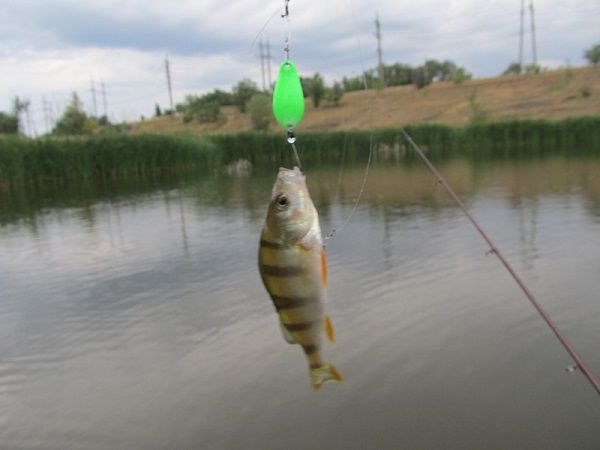
It is also possible to catch perch using spinners in the spring, but due to the low frequency of their movement, they are much less interesting to the perch than spinners, whose play is much more active.
During this period, pike also often stands along the shores, waiting for prey in the growing algae. To interest her, both spinners and wobblers or jigs are perfect.
On a note! In April and May, using a long spinning rod, you can make retrieves along the shore, especially on small rivers - this technique will certainly not leave the toothy one indifferent.
Catching pike perch in the spring with a spinning rod from the shore is, in some way, a lottery. Unlike other seasons, in the spring the behavior of this predator is quite unpredictable, and finding its parking place can be difficult. The bottom topography at this time has little influence on the pike perch’s choice of habitat; it is necessary to empirically study the area in order to identify points of its aggregation. Often it can be found under bridges, next to reverse currents, but it also happens that fanged ones accumulate simply on level ground with average depth and moderate water flow. During this period, from time to time it is possible to tempt him with deep wobblers and silicone baits.
Meeting with wild animals (danger of bites, etc.)

One day my brother and I walked shore fishing for several kilometers along the bed of a small river. We caught bass and pike and moved lightly. We separated for about three hundred meters, when suddenly, emerging from small oak thickets, I saw a huge fox in front of me. It was twenty steps away. She was really large, and, believe me, this unexpected and sudden meeting greatly alarmed me. A shiver ran down my spine. I felt that I was now on her territory and it would be better for me to quickly leave.
I immediately remembered the news about rabies in the neighboring area, and, of course, I grabbed the spinning rod tighter. I often met foxes, even in the village, but this meeting seemed the most creepy to me.
Lisa didn’t see me right away. Turning her head, she became alert and began to move towards me. You should have seen my face at that moment! The fox growled, testing my reaction and continuing to approach. At this point I no longer tempt fate and, screaming at the top of my lungs, rushed away from her. Looking back, I saw several no longer small eared foxes watching all this from a hillock. All is well that ends well!
We also had to deal with roe deer. They are very active, long-legged and shy. They have a habit of hiding until the last moment in the grass near the fisherman, and then jumping up so that his heart skips a beat from surprise!

There was also a case when my brother and I were going fishing on a motorcycle and this long-legged beast galloped right in front of us, literally a couple of meters away. We noticed her already “on approach”. Just a couple more seconds and she would have crashed into us. It felt like I was running with my eyes closed, and we were good too! The animal, of course, is not large, but from such a collision, and even at speed, you can get seriously injured.
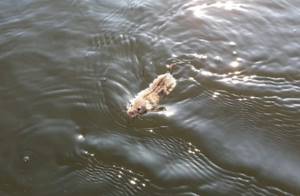
Voles, which run along the banks during the height of mouse fever, can also be included in the list of animals that are best avoided.

I would recommend to beware of encounters with wild animals, not to approach them and thereby protect yourself from possible injuries and illnesses.
Reservoirs
You can fish from the shore using a spinning rod on any body of water, and this is a big plus of this fishing option. Small streams and ponds can be checked almost thoroughly using this equipment, while large lakes and deep rivers can only be captured along the edges. However, there are global differences for such fishing only between reservoirs in which there is no current and those in which it is present.
Non-flowing
Fishing on lakes, ponds and spills is a paradise for spinning anglers. In the absence of wind, placing the bait at the desired point on the bottom will not be difficult. You can fish with jigs or wobblers, as well as with spinnerbaits or spinnerbaits - the absence of current allows you to fully reveal the play potential of most lures.
It is important to take into account the fact that the bottom of such reservoirs is often covered with vegetation, which is not prevented from filling quite large areas. Hooking on it can be critical for many rigs, especially if the braid is thin enough. However, most predators in lakes and ponds often hunt in algae thickets, so using unhooked hooks and placing bait in close proximity to the vegetation boundary can be very effective.
Flow-through
Fishing on the current has its own specifics. Low water flow usually does not affect the retrieve of most lures. The exception is ultralight class baits - when using them, it is necessary to make adjustments for lateral drift. At the same time, on stormy rivers you need to cast and retrieve correctly. If you need to reach a specific section of the bottom where a hole or promising riffle is located, with a jig head, you need to throw it slightly higher upstream.
In addition, there is no point in moving most lures across the current, with the possible exception of a heavy jig. In most cases, wiring is carried out in two ways:
- To be demolished. The bait is cast upstream, after which it is gradually reeled in or animated with jerks during parallel movement along the riverbed. This way you can navigate both obliquely and along the river.
- Against the stream. Such wiring is usually done quite slowly, since the action of the bait is ensured by the oncoming flow, which is why it makes sense to lead it as slowly as possible in order to attract the attention of even passive predators. Such wiring can be done either uniformly or stepped if the equipment is sufficiently loaded.

Another wiring option is to float the bait downstream using stepped wiring and then return it against the direction of the flow. This option combines the advantages of the previous two.
When there is a strong current, there is practically no point in using most oscillators, since the water flow seriously spoils their play and often simply sends them into a tailspin. And also, catching a predator on stormy rivers means increasing the weight of the sinker, especially if it is necessary to fish areas close to the bottom. Otherwise, shore fishing in flowing and standing waters is almost the same.
The angler is hit by a bait that bounces off under the action of a stretched fishing line when caught
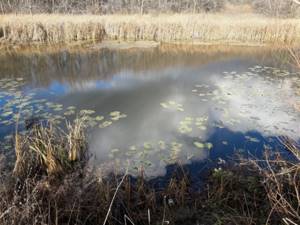
Once we were caught next to a partner. On the opposite bank there were thickets of dried reeds, into which my partner’s oscillating spoon landed. In a vain attempt to unhook it, he called me closer, and in a moment of strong tugging, the spoon came unhooked and flew at my head with the speed of a bullet. It must be said that he used a thick monofilament line, which stretched like an elastic band and then sharply shortened. The blow hit me on the left cheek, the spoon went tangentially, thoroughly stunning me and hanging on the tee in the neck area! The force of the impact turned me 180 degrees. It’s scary to think what would have happened if the spinner had landed a little to the left. My partner pulled the tee “hot”, so I didn’t even feel anything. After that incident, I am very attentive to this kind of hooks.
There was also a case when a wobbler that bounced off the reeds hit the side of the boat with all its might and one of the tees of the wobbler pierced the boat. I've heard that if the boat is overly inflated, it can explode, although this is more likely to apply to rubber models. Of course, this example with a boat does not apply to coastal fishing, but still, I think it will not be superfluous here.

In general, each hook is unique in its own way, and of all the ways to release the bait, only one will ultimately work. For example, using the scanty, almost zero shock absorption of a braided cord, you can twitch the bait, especially a jig, from underwater bushes and branches. And the presence of a hook among the gear generally solves the problem of almost any hook.
Spinning fishing from the shore in spring
Is it easy to catch perch, pike perch, and pike in the spring when you have to fish only from the shore?
It can be simple, but often you can fight all day long for one bite. And often luck depends on knowledge of the specific spring behavior of the predator.
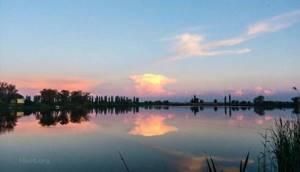
One spring evening I was returning to the car along the river bank. The result of the day was only small pike - not very lucky. On the bank of a stream flowing into the river from a water meadow, a local floater was sitting with a bunch of excellent perches. It turned out that he was fishing with a black leech using a wire - casting it at the mouth of a stream, the current drags the leech along the bottom, the bait is pulled into the river pool, and then there is a perch bite. In parting, fisherman Fr. The next weekend it broke out again in the same place, the stream (about 2 meters wide) was still flowing into the river. There was no one there, so I decided to fish the mouth. He hid behind a coastal bush and, as it should, fished for a river barrel.
I tried everything: small rubber, spinners, including front-loaded ones, small spinners and wobblers - nothing. Catch a leech and attach it to a jig head. And if you fish the way the local fisherman fished - starting the wiring along the stream. I equip an offset hook with a small black twister, clamp a pellet of about 5 mm in diameter next to the hook and throw my synthetic “leech” into the center of the stream. I open the line handle - the line goes, and so does the “leech” along the bottom of the stream. Before entering the barrel, I remove the slack and slow down the line a little - a powerful blow and from the barrel I introduce a weighty perch worth 500 grams into the stream. The black twister, along with the hook, was taken by three more perches, slightly smaller, but then the bite was cut off. While stomping down the river in search of pike, I thought about the vicissitudes of fate - I was lucky to spy on one of the secrets of the river predator's bite. And they say it’s easy to catch a good perch in the spring.
